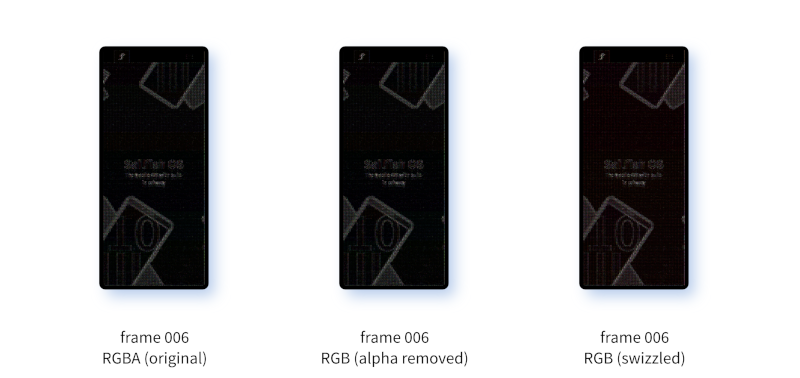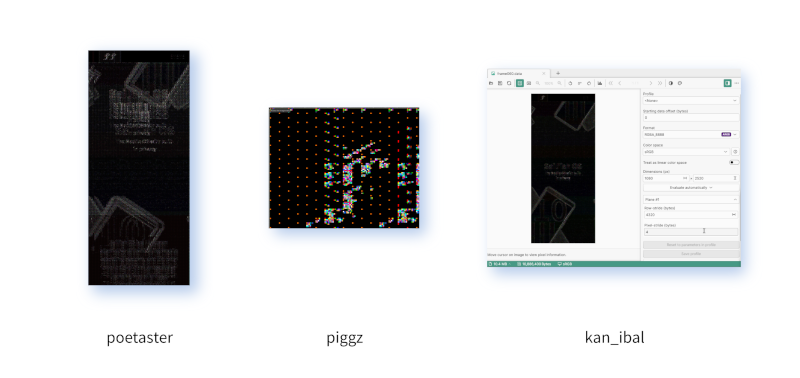List items
Items from the current list are shown below.
Gecko
18 May 2024 : Day 236 #
It's been two weeks since I last published an entry in my Gecko dev diary series. The gap was necessary for me to fit various other things into my life which just weren't going to be compatible with me working on the Gecko code, specifically my attendance of the — HPC/AI Days — conference in Durham for a week, followed by preparations for a couple of Pint of Science events I was involved with during this last week. This was my first involvement with Pint of Science and I have to admit it was a lot of fun.
The break from Gecko offered me some healthy respite, but I promised to start back up again today and here we are. I've not yet got back in to the rhythm of Gecko development yet, so my first few entries may be somewhat relaxed. I'll be taking it gently to begin with.
One important reason for this is the problem I'm trying to solve. As I left things a fortnight ago I'm still trying to figure out why the offscreen rendering pipeline is broken. Since starting on trying to fix this problem I've come a long way, but I'm still not there. More importantly, by this point it's become a problem without a clear solution. That means I no longer have a clear path forwards.
The daily rhythm of these posts is important for keeping me focused on the task, but it can also be a distraction. It means chopping the work into day-sized chunks. That can be a hindrance when what the task really needs is a deep analysis, during which there may not be so much to write about. This work is easiest to write about when I'm making code changes. When I'm not making changes to the code, things can be a bit too intangible.
That's where I am today.
Before I get in to the actual work I want to first talk about confusing textures and the amazing work of the Sailfish community in their attempts to disentangle them. If you've been following these diary entries for some time you'll know that before the gap I spent a fair amount of time trying to extract texture image data from the render surface used by the offline renderer.
The result of all this work ended up being a collection of raw dumps of pixel data which, after attempting to convert them to something visible, looked like this.
I tried all sorts to get the images into better shape but without any luck. But the courageous Sailfish community took up the baton and continued the work while I was taking a break from it.
There were great contributions from across the community, but I want to especially highlight the efforts and ideas of Tone (tortoisedoc), Adam Pigg (piggz), Ville Nummela (vige, my ex-colleague from Jolla), Mark Washeim (poetaster), thigg, attah, remote and kan_ibal, all of whom provided genuinely useful input.
Here you can see some of the efforts to decipher the code. On the left is the result of poetaster having processed the image using ImageMagick. As poetaster explains:
In the centre is a close up rendered by piggz using PixelViewer.
When Adam talks about bits I'm not sure whether he's talking about computer bits or puzzle pieces, but either way I agree it should just be a matter of putting them together int the right way.
Finally on the right we can see the image also rendered using PixelViewer this time by kan_ibal in combination with a Python script.
Again, this all sounds very plausible to me, alghouth the image still isn't popping out just yet. Thank you to everyone for your input on this. Unfortunately while none of these resulted in a definitive conclusion, it's all very helpful input. If anyone else would like to give this a go, feel free to take a look at the textures and pass them through your favourite raw image processing pipeline. I'd love to get to the bottom of this.
I'm going to leave it there for today. But tomorrow I'll be starting to look at the Gecko code again in earnest.
If you'd like to read any of my other gecko diary entries, they're all available on my Gecko-dev Diary page.
The break from Gecko offered me some healthy respite, but I promised to start back up again today and here we are. I've not yet got back in to the rhythm of Gecko development yet, so my first few entries may be somewhat relaxed. I'll be taking it gently to begin with.
One important reason for this is the problem I'm trying to solve. As I left things a fortnight ago I'm still trying to figure out why the offscreen rendering pipeline is broken. Since starting on trying to fix this problem I've come a long way, but I'm still not there. More importantly, by this point it's become a problem without a clear solution. That means I no longer have a clear path forwards.
The daily rhythm of these posts is important for keeping me focused on the task, but it can also be a distraction. It means chopping the work into day-sized chunks. That can be a hindrance when what the task really needs is a deep analysis, during which there may not be so much to write about. This work is easiest to write about when I'm making code changes. When I'm not making changes to the code, things can be a bit too intangible.
That's where I am today.
Before I get in to the actual work I want to first talk about confusing textures and the amazing work of the Sailfish community in their attempts to disentangle them. If you've been following these diary entries for some time you'll know that before the gap I spent a fair amount of time trying to extract texture image data from the render surface used by the offline renderer.
The result of all this work ended up being a collection of raw dumps of pixel data which, after attempting to convert them to something visible, looked like this.
I tried all sorts to get the images into better shape but without any luck. But the courageous Sailfish community took up the baton and continued the work while I was taking a break from it.
There were great contributions from across the community, but I want to especially highlight the efforts and ideas of Tone (tortoisedoc), Adam Pigg (piggz), Ville Nummela (vige, my ex-colleague from Jolla), Mark Washeim (poetaster), thigg, attah, remote and kan_ibal, all of whom provided genuinely useful input.
Here you can see some of the efforts to decipher the code. On the left is the result of poetaster having processed the image using ImageMagick. As poetaster explains:
I thought it might be an offset issue, but after tooling about in gimp, I'm not so sure. What 'should' they look like. The RGB data does seem to be RBG, the RGBA, I'm not sure. You said unsigned?... bits of sailfish logo can also be recognized. It does look unsigned judging from the results of the convert operation.
In the centre is a close up rendered by piggz using PixelViewer.
There is definitely almost an image there! For this I used PixelViewer, which allows to quickly try many different possible formats, this one is RGBA_8888... This is making a great puzzle... just need to figure out how to put the bits together.
When Adam talks about bits I'm not sure whether he's talking about computer bits or puzzle pieces, but either way I agree it should just be a matter of putting them together int the right way.
Finally on the right we can see the image also rendered using PixelViewer this time by kan_ibal in combination with a Python script.
There are blocks 8x8 pixels. It reminds me a jpeg compression and looks like a stage of quantization and DCT.
Again, this all sounds very plausible to me, alghouth the image still isn't popping out just yet. Thank you to everyone for your input on this. Unfortunately while none of these resulted in a definitive conclusion, it's all very helpful input. If anyone else would like to give this a go, feel free to take a look at the textures and pass them through your favourite raw image processing pipeline. I'd love to get to the bottom of this.
I'm going to leave it there for today. But tomorrow I'll be starting to look at the Gecko code again in earnest.
If you'd like to read any of my other gecko diary entries, they're all available on my Gecko-dev Diary page.


Comments
Uncover Disqus comments